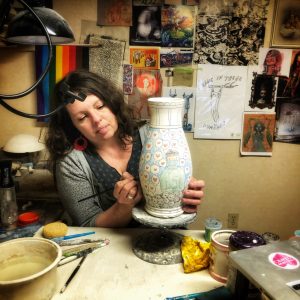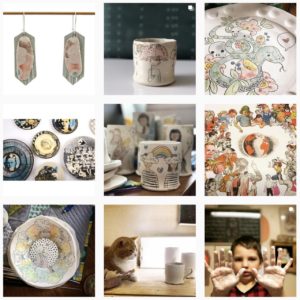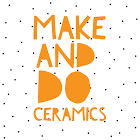Okay seriously I just read the following:
“You place your cracked piece in a pot and cover it with two cups of milk (or more if needed). Next, heat over low for an hour. Allow to cool in milk and then remove and rinse. Your piece, if the crack wasn’t too far gone, should now have resealed itself! The idea is that the protein in the milk expands when heated and fills in the cracks. It then bonds with the surfaces and as it cools, becomes one with your china. Cool right? It’s a simple trick that’s well worth trying before you toss your good pieces or wait for them to crack apart at the most inconvenient of times!”Is this not the most insane joke? I know I failed science but really? Does this work? Someone? Anyone?
Read the post here on Apartment Therapy.








My mother-in-law has done this. I was shocked the first time I heard it. You what????? With what? lol
She just soaked in cold milk, as I recall, but if you really want details I will call her. Lemme know. 😉
I just made a beautiful porcelain tray with a red decal fired at cone 04 so its not vitrified. It came out of the kiln with two hairline cracks. I saw this cure of hot milk that saved so many potters pots. would this work on a piece that isnt vitrified
Yes! However,
I put a plate (that was broken in three separate pieces and scotch taped back together) in a large container and submerged it in milk. Then placed it in the refrigerator for three days and pulled out one perfect plate. I never thought this would work, but tried it after my
Son told me it would work!
It was amazing! I could hardly believe it!!
I can see where it might fill the crack, but only cosmetically. You just end up with a crack with dried up milk casein in it. Maybe OK for display, but hardly hygienic.
What do you think Elmer’s glue is made from? It actually turns into a form of plastic. It’s totally hygrnic!
I would think the milk would wash out of the crack eventually also…at least I would hope so.
It’s the same thing Elmer’s glue is made from!
Hi, last summer I read a lot about Iron Age pots in my region (Holland). Cooking milk in pots was a way to make them more waterproof. I didn't do it with my replica's though.
e-coli ?
Boiled milk.
Research funded by the dairy board.
In Japan I was told to boil cracked or under fired pots in a pot of boiling water with half a cup of glutenous rice for an hour. That worked too. The vegan solution!
I just watched a you tube vid where they followed the directions of that viral vid that said this worked. It was an epic fail.
That’s because he wasn’t using CHINA…he was using ceramic
I tried it with my mom’s antique China. We broke one cup. Held it together with electrical tape. When it sat in the cold milk the cracks disappeared but there was no strength to the bond. Trying the warm method now, but don’t have any hope lol
Only Terra cotta and glazed Terra cotta pottery are for this purpose. This makes it more durable by boiling milk.
A complete hoax.
Try soaking broken ceramic submerged in milk for three days in refrigerator!! It works
Did it. Covered the entire mug in a pot of milk. Heated to a slow simmer for an hour. Let it cool and filled with water. No leak. Used for many cups of coffee since. It sealed the leak. The crack was three inches long.
25-year ceramicist here. Agree with a couple posts… It might fill the crack but it’s very temporary. And not structurally fixed..
Gregory, Do you have a suggestion that is structurally sound to fix a hairline crack?
My grandmother told me about this when I was first married and she gave me some of her antique dishes. I’ve been married 46 years so it was a long-long time ago.
I broke a heavy crockery piece that was part of a salad and appetizer serving set – you know one of those were each weirdly shaped piece fits into the whole. Naturally I was pretty bummed that there would be a huge piece missing, I did the milk repair – pouring boiling milk onto the piece that was held together with rubber bands, Let it sit for 48 hours. I’m still using that piece all the time, particularly around the holidays. I can’t actually tell which piece it was, It’s been through the dishwasher several times. So while putting the set away tonight, one of the oddly shaped pieces slid out of the cabinet onto the tile floor. Only about a 6″ drop – but the piece broke in half. I’m headed to the store now for a half gallon of milk to submerge this big piece. I expect it to be serviceable for a long time to come.
Please, do tell! Did it work again? I hope it did!
On my vintage Myott Royal Mail sauce dish, there’s a crack around the upper part of the handle – so we can’t “superglue” it and be done with it…
What do we do? Cold milk, boiling milk…? And will it be serviceable after “milk-treatment”?
It does work!!!! About 20 years ago my ceramic fondue pot handle (from the 70s) broke off. My husband had bought the fondue pot for me at a yard sale in the 80s so there was nostalgia involved in this situation. I had heard of the boiled milk trick so I tried it. It worked!!!!!!!!!!!! 👌👍
Hi
Being a very clumsy person that loves fine china, I’ve come to develop a bit of a procedure.
Generally, if the dish is in pieces, I’ll glue it together with a very very small amount of glue (Elmer’s Craft Bond Ceramic & Glass Cement or something else of the sort. Just make sure it’s not gonna leak toxic fumes into your food) to the edges and tape it together.
If it’s just cracked, I’ll apply a bit of that glue into the crack on one side and wipe the excess off.
in both cases, I’ll let it set overnight to up to a week for good measure, then submerge it in milk and cook on low heat as described in the article.